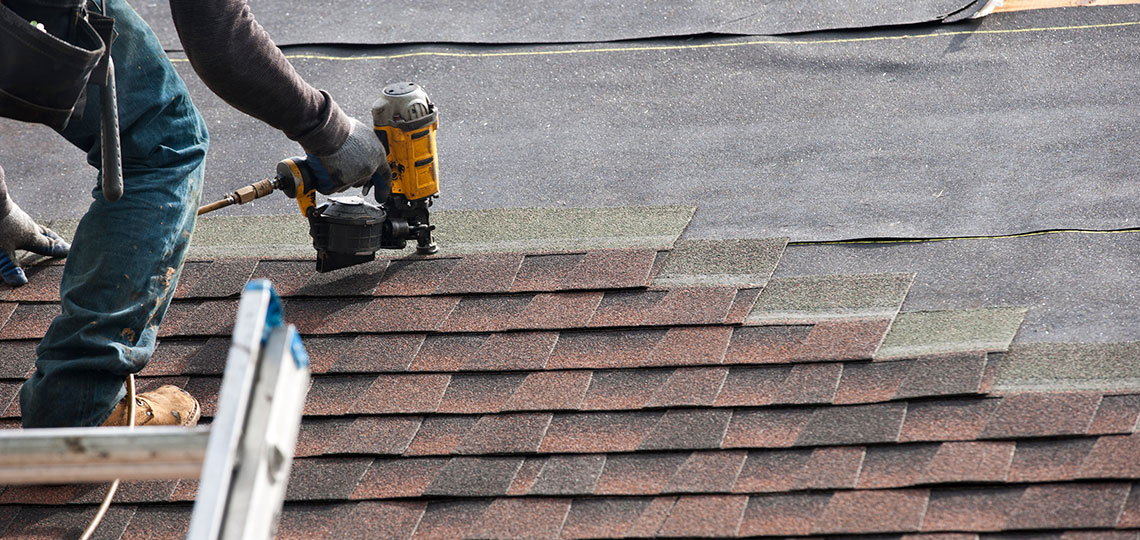A Comprehensive Check Out Roofing Companies Gainesville Homeowners Recommend
A Comprehensive Check Out Roofing Companies Gainesville Homeowners Recommend
Blog Article
Finest Practices for Ensuring Appropriate Roof Ventilation
Ensuring correct roof covering ventilation is crucial for the longevity and efficiency of a roof covering system. A balanced consumption and exhaust vent proportion, typically 1:300, plays a critical function, with intake vents ideally placed at the reduced side of the roofing system for cool air entrance and exhaust vents at the peak for warm air exit. Regular evaluations to determine obstructions and keep clear air flow are paramount. Maintaining insulation away from vents is crucial to avoid airflow limitation. Understanding these fundamental aspects establishes the stage for even more in-depth insights into installment and maintenance practices that can considerably improve your roof's efficiency.
Understand Air Flow Basics
Properly understanding ventilation essentials is necessary for making sure the long life and effectiveness of roof. Effective air flow alleviates dampness buildup and temperature extremes in the attic, both of which can cause considerable architectural damage over time. A well-ventilated roof aids in preventing usual concerns such as mold and mildew growth, wood rot, and ice dams, which can jeopardize the honesty of the roofing materials and the underlying structures.
The main goal of air flow is to facilitate the motion of air, permitting for a regular exchange between the interior and outdoor atmospheres. This equilibrium is achieved via a combination of consumption and exhaust vents that interact to keep optimum airflow. Intake vents, usually located along the eaves or soffits, allow fresh air to enter the attic area, while exhaust vents, often located at or near the roofing ridge, allow hot, humid air to escape.
Trick aspects affecting the effectiveness of roof covering ventilation include appropriate positioning, ample sizing, and guaranteeing that both consumption and exhaust vents are unobstructed. Routine examination and maintenance are essential to identify possible blockages, damages, or ineffectiveness in the ventilation system, consequently safeguarding the roof covering's performance and durability.
Sorts Of Roof Covering Vents
Roof covering vents play an essential role in maintaining effective attic room air flow and, by expansion, the total health of the roof. Various kinds of roofing vents are available, each with one-of-a-kind benefits customized to certain roof needs. Ridge vents, for example, are installed along the roofing system's peak, enabling warm, humid air to run away from the attic room. They supply constant ventilation and mix effortlessly with the roofline, making them both reliable and aesthetically pleasing.

Soffit vents are installed under the eaves and job in tandem with roofing vents to guarantee a well balanced intake and exhaust system. By enabling cooler air to get in from below, soffit vents promote the expulsion of warm air through top vents. Gable vents, located on the exterior wall surfaces of the attic, deal one more reliable service, specifically in homes with saddleback roofs.
Analyze Your Present Air Flow

Following, take into consideration the age and problem of your roof covering products and ventilation components. Older systems might not adhere to current building codes or might have weakened in time, reducing their effectiveness. Conduct a comprehensive examination to recognize any kind of indicators of deterioration, such as rust, damages, or spaces that might jeopardize the system's performance.
Additionally, determine the attic temperature and humidity levels. High temperature levels and humidity can suggest poor ventilation - gainesville roofing companies. Utilize a hygrometer and thermostat to acquire accurate readings, contrasting them with exterior problems. Consistent discrepancies recommend prospective issues that need dealing with.
Installation Best Practices
Effective installation of roof covering ventilation systems is vital for making certain ideal performance and long life. Proper setup starts with comprehending the particular air flow demands of the building and the roofing it covers. This includes determining the proper ratio of consumption to exhaust vents, commonly adhering to the 1:300 guideline, which states one square foot of air flow for every single 300 square feet of attic floor room.

The placement of vents is similarly critical. Intake vents need to be installed at the roof covering's lower edge, frequently in the soffits, to permit amazing air to go into. Exhaust vents, on the various other hand, must be mounted near or at the roofing's optimal to assist in the leave of cozy, moist air. This creates an all-natural airflow that aids preserve temperature level and dampness balance within the attic room space.
Seal all vent connections meticulously to protect against air leaks and possible water seepage. Usage premium materials and adhere to manufacturer guidelines to ensure sturdiness and efficiency. Furthermore, incorporating ridge vents with baffles can substantially enhance air flow efficiency by protecting against wind-driven rain and snow from going into the attic room.
Eventually, accurate setup of roof covering air flow systems mitigates possible issues such as mold growth, ice dams, pop over here and structural damages, ensuring the roof's integrity and the building's general wellness.
Routine Maintenance Tips
Uniformity in maintenance techniques is fundamental to making sure the long-lasting effectiveness of roof air flow systems. Routine inspections are crucial, preferably executed biannually-- in the spring and autumn. During these inspections, guarantee that vents are complimentary of particles, nests, and various other blockages that could restrain air movement. Check for any indications of moisture buildup or mold, as these can indicate incorrect ventilation or leaks (gainesville roofing companies).
Cleaning up the vents is another vital task. Utilize a soft brush or a vacuum cleaner to eliminate dirt and debris from intake and exhaust vents. Beware not to damage the vent screens or louvers during the process. Furthermore, examine the attic room space for any indicators of water damages, which can endanger the stability of the roof system.
Proper insulation is just as vital. Guarantee that attic insulation does not obstruct the vents, as this can drastically limit airflow. Reposition or replace it to maintain an efficient barrier. if any insulation has actually changed or settled.
Finally, replace any harmed or missing parts without delay. Broken vents, split tiles, or shabby flashing can all contribute to inadequate ventilation and needs to be dealt with immediately. Regular maintenance guarantees that the roof covering air flow system functions efficiently, therefore prolonging the lifespan of the roof covering itself.
Verdict
Making certain appropriate roof covering air flow is paramount for maintaining the performance and durability of a roofing system. Adherence to the 1:300 intake and exhaust vent proportion, coupled with the tactical positioning of vents, is crucial.
A balanced intake and exhaust air vent ratio, generally 1:300, plays a crucial function, with consumption vents ideally positioned at the lower side of the roof covering for awesome air entrance and exhaust vents at the peak for warm air leave. Intake vents, usually located along the eaves or soffits, permit fresh air to get in the attic room area, while exhaust vents, often located at or useful content near the roof ridge, allow warm, humid air to run away.
Soffit vents are mounted under the eaves and job in tandem with roofing vents to make sure a balanced consumption and exhaust system. By allowing cooler air to get in from below, soffit vents help with the expulsion of hot air via top vents. Adherence to the 1:300 consumption and exhaust air vent proportion, why not check here combined with the strategic positioning of vents, is important.
Report this page